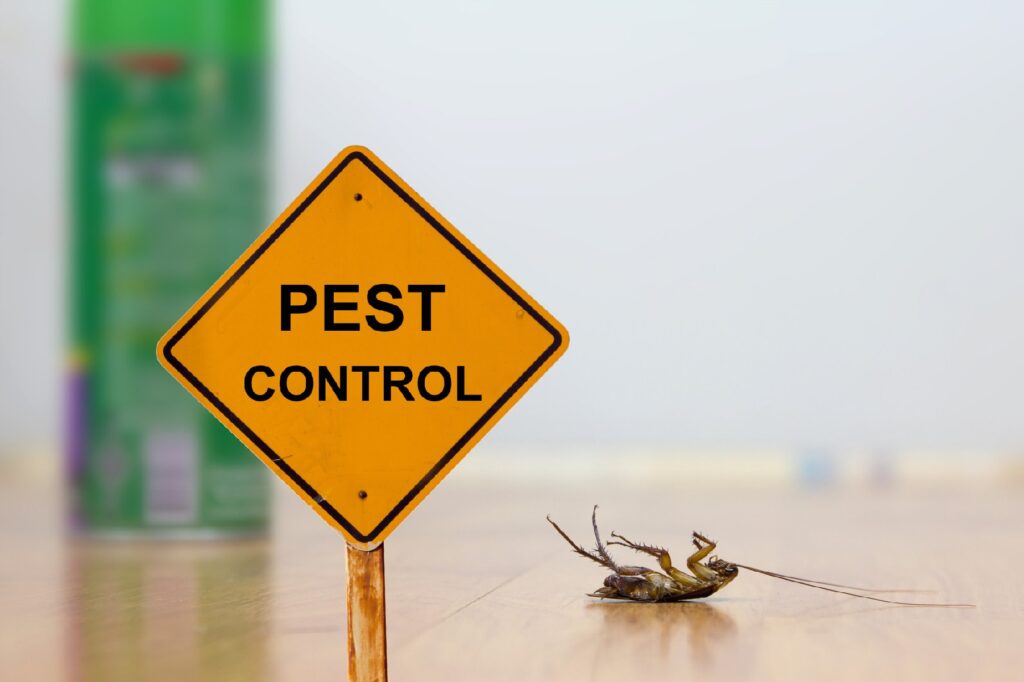A1 Residential Pest Control Portland OR Bed Bugs - Protect Your Home
A1 Residential Pest Control Portland OR Bed Bugs - Protect Your Home
Blog Article
Efficient Parasite Control Services: An Extensive Take A Look At Extermination Techniques and Prevention Actions
In the realm of bug control solutions, the successful administration of invasions calls for a careful approach that integrates numerous techniques and procedures for both obliteration and prevention. From Integrated Insect Monitoring (IPM) techniques that focus on lasting solutions to chemical elimination techniques designed for targeted elimination, the arsenal versus parasites is huge and diverse.

Integrated Bug Administration (IPM) Approaches
Integrated Insect Monitoring (IPM) Techniques incorporate a detailed approach to pest control that concentrates on prevention, surveillance, and control approaches to effectively handle insect populaces. By integrating numerous techniques, IPM intends to lessen the impact of parasites while likewise decreasing the dependence on chemical pesticides. Prevention exists at the core of IPM, highlighting techniques like appropriate cleanliness, upkeep of hygiene, and securing entry points to prevent insects from infesting buildings. Monitoring plays a vital role in IPM by on a regular basis identifying and examining pest levels to establish the proper treatment thresholds. Control techniques in IPM focus on making use of physical, biological, and social techniques before turning to chemical treatments as a last option. These methods consist of presenting all-natural killers, environment modification, and utilizing capturing tools to keep insect populaces in check. In general, IPM promotes a ecologically mindful and sustainable technique to pest monitoring, advertising lasting remedies that safeguard both human health and the community.
Chemical Elimination Methods
Chemical elimination strategies are frequently utilized in bug control solutions to effectively remove parasite populaces that present a risk to human health and home. These strategies entail the use of numerous chemical compounds specifically designed to target and get rid of pests such as bugs, rodents, and various other unwanted animals. The application of pesticides, pesticides, rodenticides, and various other chemical representatives is very carefully regulated to make sure maximum performance while decreasing threats to people, pet dogs, and the environment.
Among the vital advantages of chemical extermination strategies is their ability to offer fast and targeted outcomes, making them particularly beneficial in cases of extreme infestations or urgent parasite control needs - a1 portland bed bug exterminator. Nevertheless, it is important to emphasize the value of appropriate handling, application, and disposal of these chemical products to prevent unintentional damage
Furthermore, incorporated pest monitoring (IPM) techniques typically combine chemical elimination strategies with various other techniques such as hygiene, habitat adjustment, and organic controls to produce a comprehensive and sustainable parasite control strategy. By incorporating chemical extermination strategies judiciously within an IPM framework, parasite control solutions can properly handle bug populations while reducing potential threats to human wellness and the atmosphere.
Biological Pest Control Methods
Using all-natural predators and parasites to manage pest populaces is a lasting technique called biological pest control. This approach utilizes the all-natural devices of the ecological community to regulate insect populations without relying upon artificial chemicals. One typical organic control method includes presenting natural opponents of the target parasite species, such as ladybugs for aphid control or nematodes for termite infestations. These natural predators prey on the pests, helping to maintain their populaces in check.
One more effective biological control strategy is making use of microbial pesticides. These are normally happening content microorganisms, such as fungi, germs, and infections, that particularly target and infect specific bug varieties. By making use of these microbial agents, parasite populations can be properly decreased without creating or damaging beneficial organisms harm to the atmosphere.
Physical Bug Avoidance Measures
Carrying out physical pest avoidance steps entails using obstacles and structural modifications to prevent insects from getting in or infesting a home. Installing door moves, screens on home windows, and sealing cracks in the structure can assist stop bugs like bugs and rodents from gaining access inside your home.
One more physical avoidance step is the use of obstacles like dig this fence to maintain larger pests such as raccoons or deer away from the property. By implementing these physical insect prevention steps, property owners can dramatically decrease the threat of parasite problems and the damage they can trigger.
Specialist Bug Examination Treatments
Performing methodical and extensive parasite assessments is a fundamental element of professional insect monitoring protocols. Specialist parasite examiners are trained to review thoroughly check out homes for indications of invasions, recognizing pest types, entrance factors, and helpful conditions.

Conclusion
In conclusion, effective insect control solutions employ a variety of methods, including Integrated Bug Administration approaches, chemical elimination approaches, organic controls, and physical avoidance measures. Expert bug examination treatments play a critical function in determining and addressing pest concerns in a timely manner. By implementing a mix of these techniques, homeowner can efficiently handle and stop insect infestations.
From Integrated Bug Monitoring (IPM) techniques that focus on sustainable services to chemical extermination strategies made for targeted removal, the collection against bugs is multifaceted and substantial.Integrated Insect Administration (IPM) Methods incorporate an extensive approach to pest control that focuses on tracking, avoidance, and control approaches to successfully take care of pest populations.Chemical elimination strategies are commonly utilized in bug control solutions to successfully eradicate bug populations that present a threat to human wellness and property.Using natural predators and parasites to manage insect populaces is a sustainable approach understood as biological pest control.In conclusion, reliable pest control solutions utilize a variety of methods, including Integrated Bug Administration methods, chemical elimination approaches, organic controls, and physical avoidance procedures.
Report this page